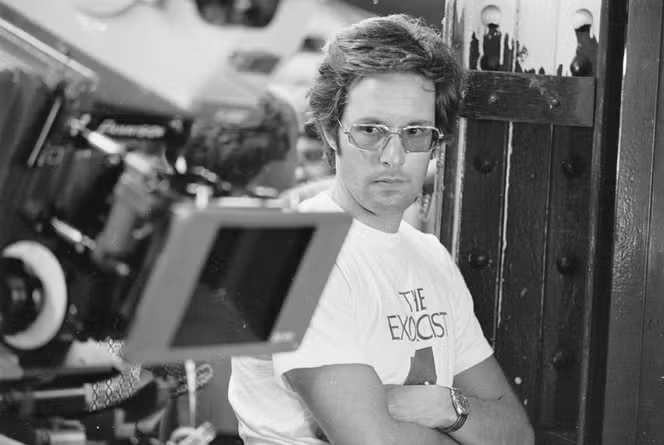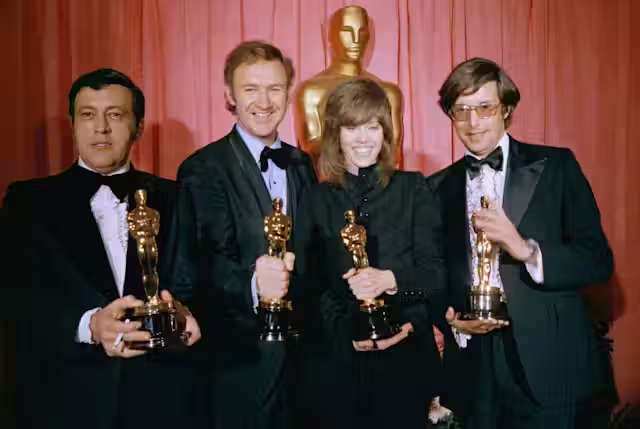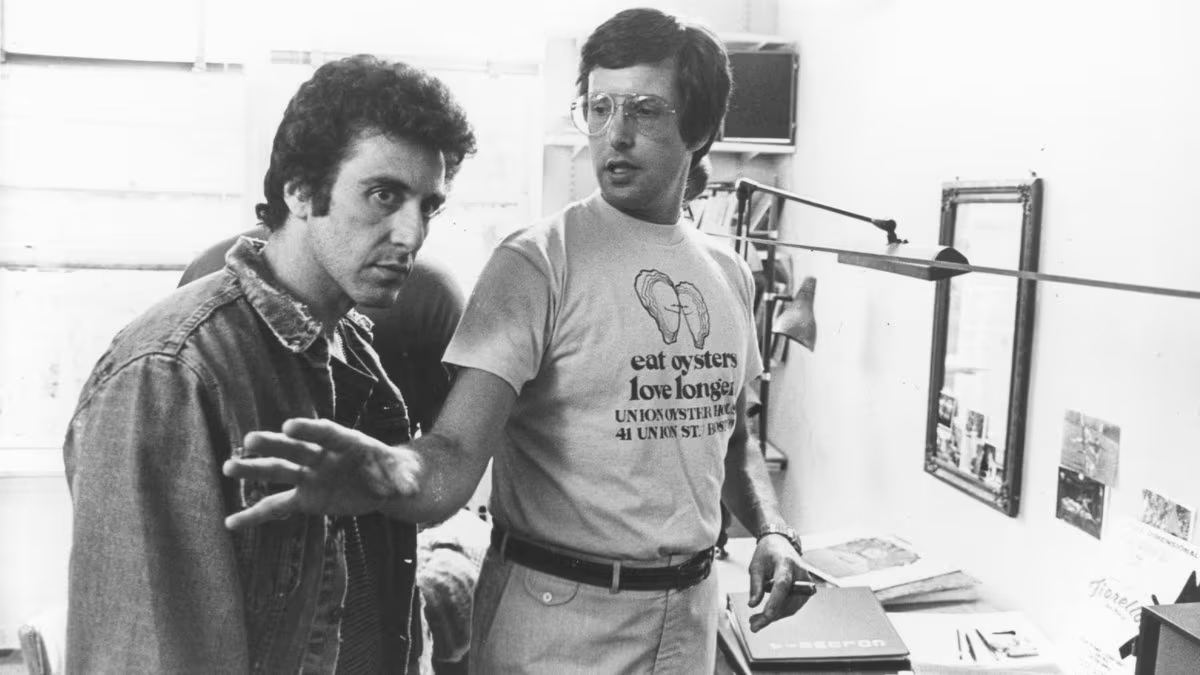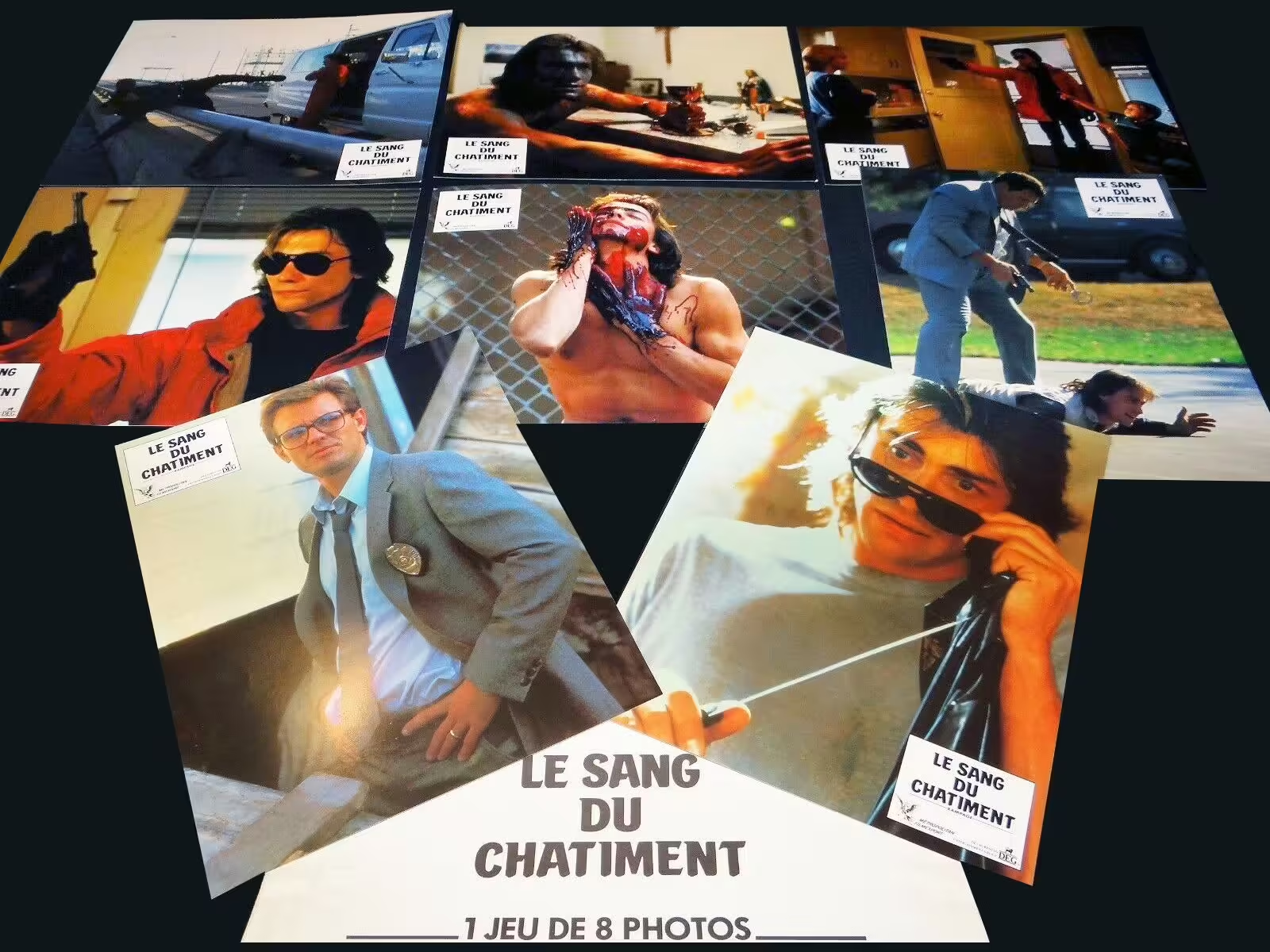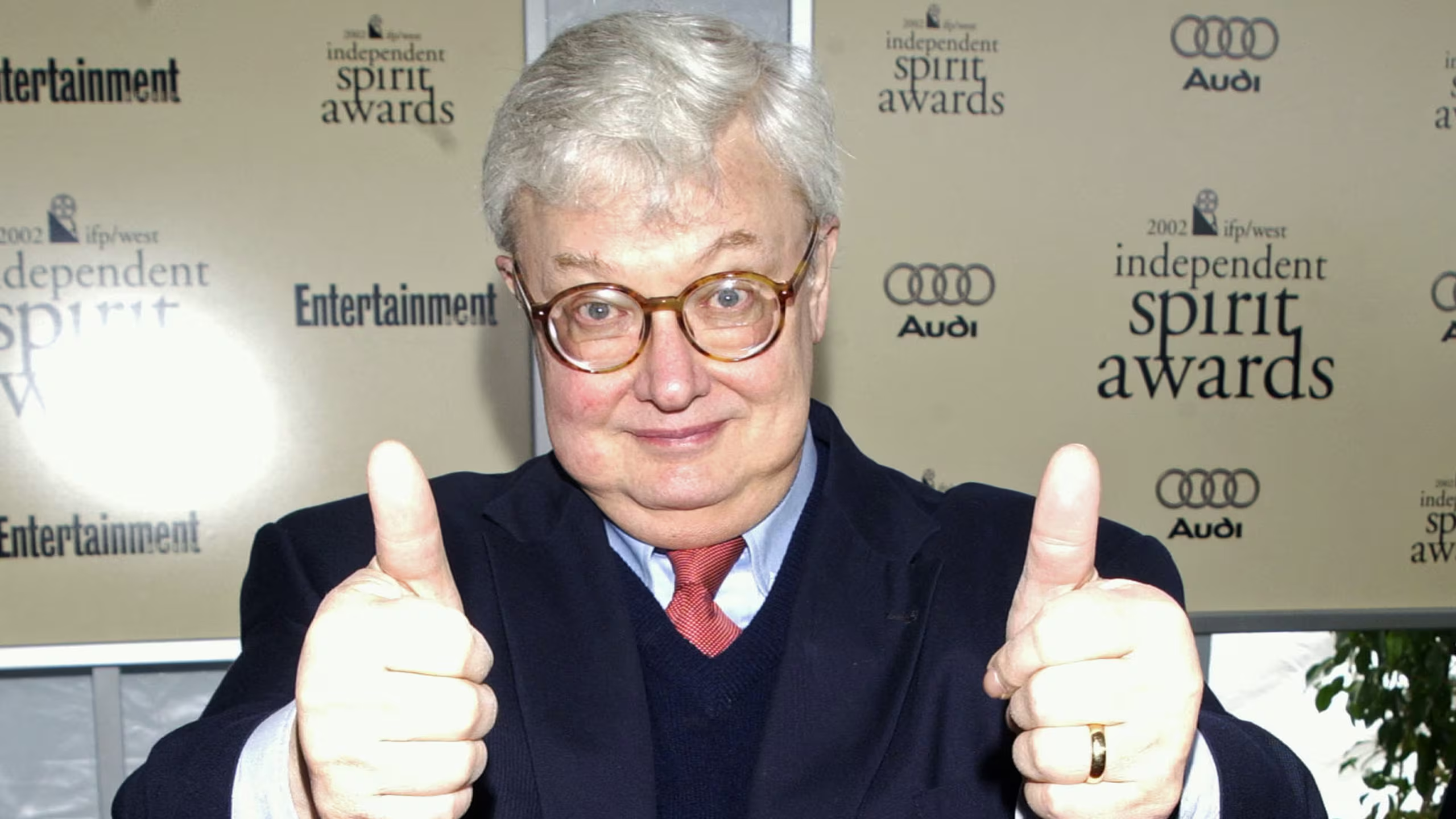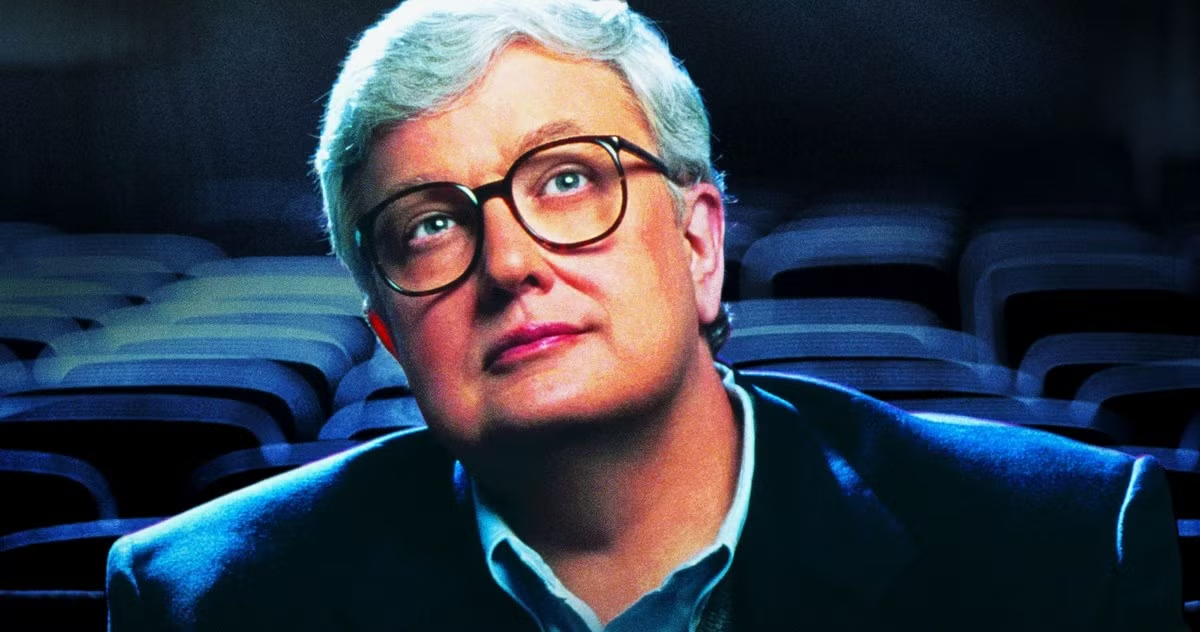

Starring, written, produced, and directed by Clint Eastwood.

Co-starring Isaiah Washington, Lisa Gay Hamilton, James Woods, Denis Leary, Mary McCormack, Diane Venora, Michael McKean, Michael Jeter, and Bernard Hill.


Written by Larry Gross, Paul Brickman, and Stephen Schiff, based on the novel by Andrew Klavan.

Produced by Lili Fini Zanuck and Richard D. Zanuck.

Cinematography by Jack N. Green.

Edited by Joel Cox.

Music by Lennie Niehaus

A Zanuck Company / Malpaso production.

A Warner Bros. release.

Preceded by Absolute Power.

Followed by Space Cowboys.


Warner Bros.’ official synopsis:
“Boozer, skirt chaser, careless father. You could create your own list of reporter Steve Everett’s faults, but there’s no time. A San Quentin death row prisoner is slated to die at midnight – a man Everett has suddenly realized is innocent. Clint Eastwood memorably plays Everett in “True Crime,” a savvy beat-the-clock thriller. Isaiah Washington, Denis Leary, Lisa Gay Hamilton, James Woods, Diane Venora and others populate this suspense tale that tightens to nerve-fraying intensity, intercutting the parallel stories of the inmate and Everett’s scramble to save him… and perhaps lift his own life out of the trash heap along the way. Everett is harried, determined and trying not to self-destruct. And the clock is ticking.”


Eastwood’s overlooked 1999 mystery-drama was significantly ahead of its time in prefiguring the true crime craze of the post-Serial, post-COVID streaming era.






If not for Eastwood’s singularly special relationship with Warner Bros. (only Christopher Nolan has had it so good at the studio, though for nowhere near as long a tenure), this is exactly the type of picture that would premiere on Netflix if produced today.



A critical and commercial disappointment upon its release (though Roger Ebert notably gave it a favourable review), twenty-five years later, nearly all of it has aged remarkably well (with the exception of poor, underused Christine Ebersol, who is saddled with some dead-on-arrival, faux-progressive, flirty banter in a thankless role).

Eastwood wears the part of Steve Everett, a disillusioned, time-weathered, down-on-his-luck reporter, like a tailored suit (or one of the comfy, rumpled, button-ups that he favours in this picture).

If your nose for a story is gone, my friend, you’re gone, too.
James Woods to Clint Eastwood in True Crime
Clint’s charm is the picture is effortless, and his dogged investigative reporter is a nice variation on the tough-guy detective roles he made so famous in the Dirty Harry (1971) franchise, along with his many other cop procedurals like Coogan’s Bluff (1968), The Gauntlet (1977), City Heat (1984), Tightrope (1984), The Rookie (1990), A Perfect World (1993), and Blood Work (2002).









Eastwood gives a much gentler performance here than in those other pictures mentioned above. His washed-up newsman is not just another tough cop spitting out trailer-friendly one-liners before knocking off some undesirable bad guy. He doesn’t threaten, flash a badge, pull a gun, or throw any punches. He’s just a man of advancing years who has learned to survive by his wits and his charm.


Playing Everett afforded Eastwood opportunities for some lighter comedic, even romantic, moments, recalling his work as Frank Horrigan in 1993’s excellent political assassination thriller, In The Line Of Fire, directed by Wolfgang Peterson (Das Boot), my favourite Eastwood performance of all.

In True Crime, Eastwood stars as the newly-sober, old school investigative reporter, Steve Everett, who is on something of a life and career downturn after screwing up an important story back when he was drinking way too much.

Everett gets an unexpected shot at redemption when his colleague at the paper, Michelle, played with much charm by Mary McCormack (the Howard Stern pseudo-biopic, Private Parts), is killed driving home drunk from a night out at the bar with him. McCormack’s brief performance is impressive in that she is only given this brief opening sequence in which to make an impression that must last for the rest of the picture, and she does just that.

The bar scene is a playful, nicely nuanced two-hander in which Eastwood’s aging, habitual philanderer’s fading charms almost work on Michelle, before she wises up (though not enough to call a taxi).


After Michelle’s death, a deeply shaken Everett takes over the last story she was working on before her crash: the possible wrongful conviction and incarceration of death row inmate Frank Beecham (Isaiah Washington, Clockers, Out of Sight), whose scheduled execution by lethal injection is imminent.

Isaiah Washington displays great compassion, dignity, grace, and fury in the role of a man clinging to his faith in god and his unwavering asseveration that he is innocent of the brutal murder for which he has been convicted – the cold blooded, daylight killing of a convenience store clerk, played by alt-rocker Beck’s ex-wife, Marissa Ribisi (Richard Linklater’s Dazed & Confused).

Four years earlier, Washington showed that same slow-simmering intensity, passion, and quiet suffering in the Richard Price-penned, Spike Lee-directed Clockers (1995).





With his deeply empathetic and compassionate portrayal of protagonist Strike’s older brother, Victor, Washington showed us a complicated, burnt-out family man, who commits the murder Strike doesn’t have the stomach for, literally and figuratively (Chocolate Moo!, anyone?), as the desperate act of man at the end of his tether. And while the part of Beechum, as written, is much less complex than that of Victor in Clockers (Beechum may have been a more interesting character had the writers created a credible, or at least, reasonable doubt as to his innocence), Washington’s performance supplies whatever layers the character is missing on paper.

Especially effective in True Crime is the slow-burn manner in which Eastwood’s Everett, now “sober as a judge,” takes up the cause that Beecham may, in fact, be innocent. It’s not what his editors want to hear. Everett’s article is only meant to be a side-bar, a “human interest” piece, not an exposé on an impending miscarriage of justice.

What begins solely out of a sense of guilt and responsibility to his dead colleague and friend (and would-be paramour), slowly deepens from curiosity to crusade, as Everett becomes Beecham’s final (and only) hope for clemency in a desperate race against time.

Frankly, I don’t give a rat’s ass about Jesus Christ. I don’t care about justice in this world, or the next. I don’t care what’s right or wrong. Never have. But you know what this is? That’s my nose. To tell you a pitiful truth, that’s all I have. When my nose tells me something stinks, I gotta have faith in it, just like you have faith in Jesus.”
-Clint Eastwood to Isaiah Washington in True Crime.


Everett may be a callous, shallow, journalistic has-been, and (only recently) ex-drunk, who’s sleeping with his put-upon editor’s (Denis Leary) wife seemingly out of spite, and claims his only interest in Beecham is in getting a juicy story, not in the noble pursuit of justice for a wrongly imprisoned man about to be put to death, but he risks way too much in his life and career to save Beecham from the needle for us to believe his apathy. And with no time to spare! The looming execution is scheduled for midnight.

It is a testament to the skill of Eastwood, the director, his screenwriters, Brickman (Risky Business); Schiff (Oliver Stone’s Wall Street: Money Never Sleeps), and Gross (Walter Hill’s 48 Hrs), and long-time editor, Joel Cox (Unforgiven; Richard Jewell), that True Crime never lets up on the tension of the ticking clock that is Beecham’s coming execution. Essentially the B-story to Everett’s investigation, Beecham’s last day on earth is a harrowing, gut wrenching, heartbreaking one.

In its detailing of the hours, minutes, and seconds leading up to the state killing, the film sneaks up on the audience, who have been lulled by the leisurely pace of the first few prison scenes into forgetting that time is very quickly running out, and soon there will be none left.

Eastwood and Cox use repeated inserts of a clock on the prison wall to remind us of the fact that time is short, but we don’t really need them.


As the protesters gather outside the prison, and those around Beecham, or connected somehow to the case, become more desperate, solemn, panicked, blood-thirsty, etc., we know that poor Frank is really not long for this world.

Even his exhausted, well meaning lawyer runs out of all hope when his final appeal is denied and Beechum refuses to accept the only lifeline left open to him: He could save his own life, she tells him, if only he would admit his guilt and show remorse for the heinous killing.

But that would mean Beecham’s young daughter growing up believing that her father was a murderer. Beecham would rather die than be seen as a killer in his baby’s eyes.

Beecham’s daughter may be more of a story device than a fully fleshed out character, but as devices go, her presence is effective on two fronts.

First, Beechum’s undeniable love for her, evident in his patience and kindness towards her, and his choice to die an innocent man rather than live with her thinking him a guilty one, goes a long way towards creating audience affection for him, and making us invest more into Everett’s investigation into Beechum’s possible, then likely, innocence. No decent human being wants to see an innocent child deprived of a loving parent.




It also allows us to see the prison staff as actual human beings, rather than just a bunch of needle-happy executioners when, in one particularly heartwarming sequence, the warden deploys what appears to be a full-scale bomb squad search of Mrs. Beechum’s vehicle, not because there have been any threats made against her, but to find the little girl’s missing green crayon, which she needs to draw the green pastures where her daddy tells her he is going. In a lesser director’s hands, with less-skilled performers than Washington, Gay Hamilton, and Bernard Hill (as the sympathetic, but duty-bound warden), this scene could have been terminally cute and unbearably sentimental.

But Eastwood’s hand as a director in this scene, and throughout the picture, is as subtle, and honest, as ever, and we never feel that we are simply being manipulated into a short cut to caring for Beechum.

There is no doubt about the pain and fear in Washington’s eyes, but his behaviour is never anything less than completely controlled. He bottles his turbulent emotions for the benefit of his wife and daughter, and to retain whatever dignity that six years of wrongful incarceration have yet to strip away from him.

The second manner in which the inclusion of Beechum’s daughter proves to be a smart choice is in the opportunity it creates to contrast Everett’s own parenting. Where Beechum is attentive, and invested in his relationship with his little girl, Everett is anything but. Spending time with her is an obligation, an item simply needing to be scratched off his overly cluttered to-do list.





It’s unusual in a legal thriller for one of the most harrowing and anxiety-inducing sequences to centre around bad parenting, but the game of “speed zoo” that Everett inflicts upon his daughter, about the same age as Beechum’s, qualifies as some of the worst on-screen parenting that we have seen since Faye Dunaway went batshit crazy over wire-hangers in her Joan Crawford biopic, Mommie Dearest (1981).


Everett and Beecham finally meet at about the film’s halfway point, when Everett arrives at San Quentin to interview Beecham on the precipice of his execution.


Convinced now of Beecham’s innocence, Everett races against the clock, tracking down leads…



Interviews witnesses…


Follows clues…


Annoys his editors…

And tries (and fails) to appease his neglected wife and daughter by squeezing in some quality family time (the disasterous zoo sequence)…


As the death hour fast approaches.

And because this is the kind of movie where we know all of our questions are going to be answered before the end credits roll, Everett, of course, gets to the truth before the fatal needle can be administered, and we learn, in flashback, what really happened in the convenience store that fateful, awful day.

In the end, it’s no longer just a juicy story for Everett. He finally realizes that he isn’t just on a quest to save Beecham’s life, but to save his own, too. Everett’s story proves to be a lifeline for both men. There lives will never again intersect, but they will both be forever changed because they once crossed paths.


In the end, True Crime doesn’t offer up many surprises, or re-invent the genre the way Clint did with the American Western in his most beloved film, 1992’s Best Picture-winner, Unforgiven, but this film’s charm is actually in how fully it delivers on what we have come to expect from an old-fashioned investigative thriller, something which fewer and fewer entries in the genre seem capable of doing.


True Crime is no more, but certainly no less, successful in realizing its (admittedly) modest ambitions than the kind of popcorn mysteries that made John Grisham adaptations (probably the closest corollary films) so popular in the 1990s.






It’s not as good as Sydney Pollack’s take on The Firm (1993), or Coppola’s underrated Matt Damon vehicle, The Rainmaker (1997), but it’s better than Alan J. Pakula’s mounting of The Pelican Brief (1993), a lot better than James Foley’s dreadful waste of Gene Hackman, The Chamber (1996), and pretty much holds its own against The Client (1994), and A Time To Kill (1996), the pair of Grisham adaptations that Joel Schumacher directed between his franchise-stalling Batman sequels, Batman Forever (1995), and Batman & Robin (1997).

Stop fucking Bob’s wife. He doesn’t like it.
-James Woods to Clint Eastwood in “True Crime“
One of True Crime’s greatest pleasures is the embarrassment of riches that comprise its overqualified supporting cast.



Bit parts that might otherwise be populated by unknown faces in a typical film of this sort are played here by the likes of Michael McKean (Spinal Tap, Better Call Saul), as a pushy priest, James Woods (Salvador, Casino), as Eastwood’s frustrated publisher, Denis Leary (Monument Ave, Rescue Me), as his cuckolded editor, Bob, Michael Jeter (The Fisher King), as an overzealous witness, and Bernard Hill (Titanic, Lord of the Rings), as the kind warden.

And as always, there is the assured, subtle, deceptively effortless direction by the film’s star. Because Eastwood directs himself, famously gives little in the way of verbal instruction to his actors, and because there is nothing flashy about his visual style, always opting for as few set-ups as possible to convey the story he’s telling, the intelligence of his shot choices, the considered rhythms of his pacing, and the uniform consistency of the performances in his films are often over-looked outside of those periods in his legendary and uniquely lengthy career where he has found himself suddenly back in fashion.

Clint is a little like another American auteur that way. It was the late, great, Robert Altman (The Player, Short Cuts) who ascribed his waxing and waning popularity through the decades to the circular whims of fashion.




And though this period of Eastwood’s career, from Absolute Power (1997) to Bloodwork (2002), saw him mostly out of critical and commercial favour, he would soon be back in fashion with the overrated but widely adored Million Dollar Baby (2004).



This year he’s back in awards contention once more, at 93-years-old, for 2024’s Juror #2. The one-time Man With No Name may not have taken his last turn on the merry go-round of Oscar-glory just yet.
Shot For Shot: The Crash

As an avid young cinephile of about 11 years old, I talked my parents into allowing me a subscription to Premiere Magazine. Though it survives today in a French-only format, the English-language US publication I came of age with is now defunct. In the form that I encountered it, Premiere was a glossy film-school-in-a-magazine that taught me so much about filmmaking and filmmakers that I can scarcely disentangle its influence in shaping my tastes during those formative film-watching years from the films themselves.

Glen Kenney’s reviews were second in my heart only to Roger Ebert’s, who was, even then, my favourite critic.


My absolute favourite feature in Premiere Magazine was its ongoing series Shot By Shot. I most vividly recall the photo spread on the bus-jumping-the-highway-gap scene in 1992’s Keanu Reeves/Sandra Bullock-breakout, Speed. It is in the spirit of that series, and that article, that I offer the following argument for Eastwood as a genuine auteur: The crash scene from True Crime:

Eyes not on the road.

Distracted by the radio.

Fixing her lipstick.

Checking it twice.

Ignoring the treacherous conditions.

Accelerating at speed.

Reduced visibility / blurred vision.

Losing traction.

Out of control.

Hitting the rail.

Spinning the wheel in vain.

Struggling to see.

A view of impending collision.

A Hail Mary swerve.

Slamming on the brake.

Throwing up her hands.

Quiet after the storm.

The aftermath.

As a special treat to kick off this inaugural post for the new series:
The Filmography Presents: Bjorn’s Take:

“True Crime (1999) comes at an interesting period for Clint Eastwood, one of a number of “workhorse” eras where he was between periods of outsized critical and cultural recognition.



For me, this falls in with a number of somewhat interchangeable two-word title vehicles that he cranked out between his most broadly adored film, the Oscar-feted Unforgiven (1992), and his second period of near-universal acclaim, earmarked by Mystic River (2003) and Million Dollar Baby (2004), a pair of films I find mildly and majorly overrated, respectively.


I didn’t bother with True Crime when it was first released, nor was my interest adequately piqued by the similar (and similarly titled) cranky-old-guy-on-a-crusade pictures that bookended it, Absolute Power (1997), and Blood Work (2002).

I did, however, take a chance on Space Cowboys (2000), a paleolithic dad-movie that’s one of his poorest directorial efforts.

Yet man can not live on Paul Thomas Anderson movies alone, and the 21st century auteurists finally aroused my interest sufficiently to delve deeper.

It’s kind of amazing to realise that Eastwood, a man who directed a widely-acclaimed movie in 2024 (Juror#2), was already three years past conventional retirement age when he made True Crime. Not that he acknowledges it here, as his Steve Everett, a Samuel Fuller-style old school newspaperman, has a wife in her 30s, a mistress in her 20s, and a daughter barely out of diapers. Everett smokes indoors, enjoys a hearty glass of whisky, and brawls (verbally, but with a definite undercurrent of fisticuffs) with his editors. But he also knows an injustice when he sees it, and he spends most of True Crime trying to prove the innocence of death row inmate Frank Beechum (played by Spike Lee regular Isaiah Washington).

True Crime is the stuff of formula, but it’s a formula that’s worked for Eastwood since Coogan’s Bluff (1968): A tough, no-nonsense figure rights the wrongs of injustice, causing carnage both physical and emotional along the way.


It seems important to Eastwood to have disassociated himself from the amoral “Man With No Name” once he established himself as the kind of actor who wanted to call his own shots every step of the way, perhaps because of his own personal, very prominent own moral compass, but also as a compliment to his directing mentor, the great Don Siegel, who explored similar themes in his own work.

True Crime is mostly a ticking-clock kind of movie, with Everett running around the Bay Area in his beat-up Mustang, as the possibility of clemency for his condemned inmate dwindles.

He does take a few moments for some quality time with his daughter – racing around the San Francisco Zoo in a truly unhinged sequence – and attempts to mend his broken relationships, but this is mostly a movie with one purpose in mind: solving a mystery to save a man’s life.

For a lot of True Crime I was wondering to myself what noted Republican Eastwood thought of the death penalty. During his most politically cranky period in the Obama-era, he claimed to be vehemently in favour, but it’s hard to reconcile that with this movie’s suspense being largely derived from the possibility of an innocent man being put to death. Eastwood might suggest that bad investigative practices, and the same sort of bureaucracy that Insp. Harry Callahan would butt heads with, are to blame, and that it’s up to good people to do right. Whether or not that means we should all be invetigating cold cases in our space time, True Crime does not make evident.

The upshot is that Eastwood is as watchable and complelling as ever, and the psychological stability of his on-screen exemplar is never definite. That’s one of things things I always find most interesting about Eastwood’s personality-driven projects, and something I look forward to invetigating deeper as we dive into his work.”

–Bjorn Olson, guest contributor, is the co-host of The Filmography podcast, which just wrapped its second season. Season 3 is launching soon!


































